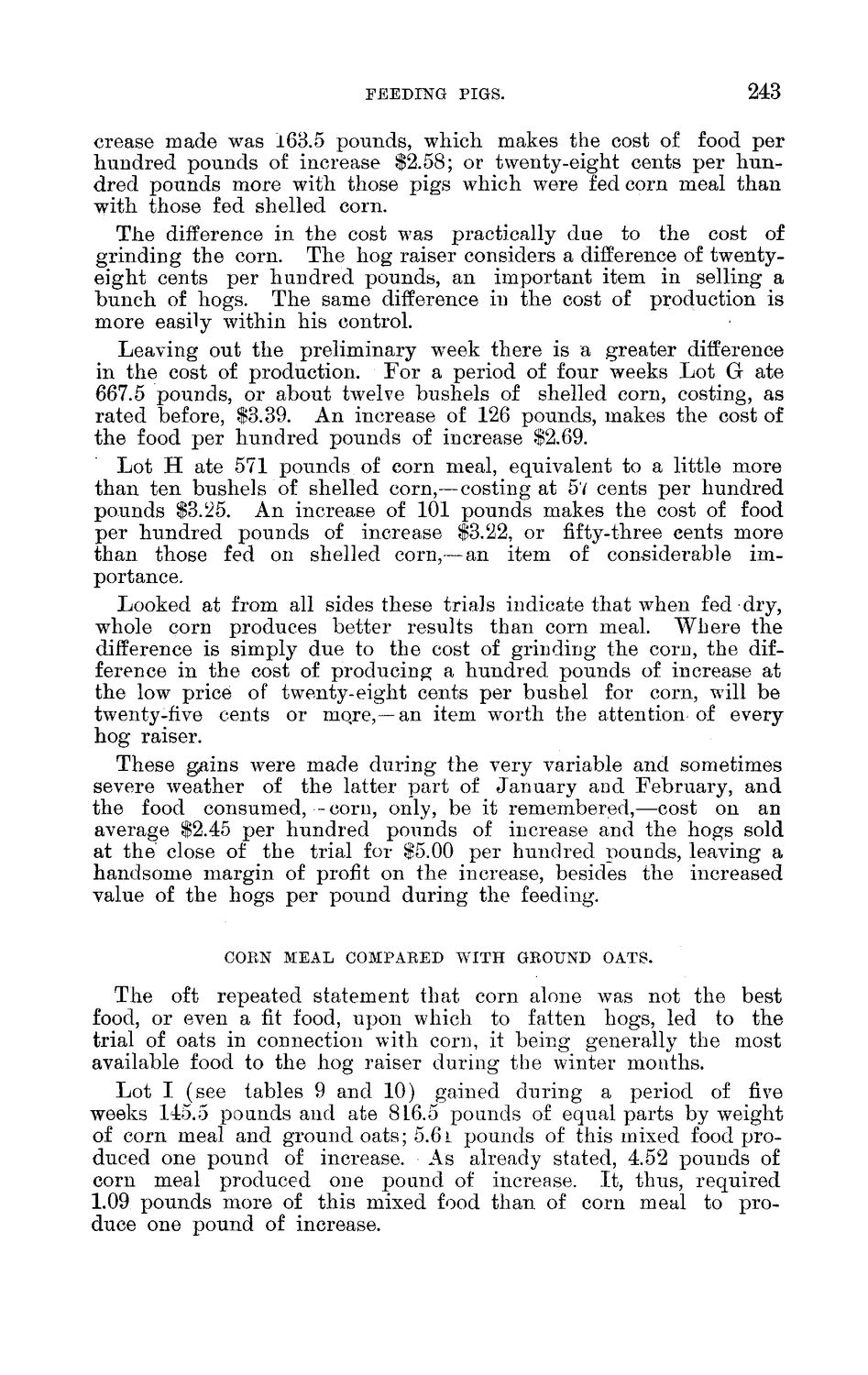| |
| |
Caption: Board of Trustees Minutes - 1888
This is a reduced-resolution page image for fast online browsing.

EXTRACTED TEXT FROM PAGE:
FEEDING PIGS. 243 crease made was 163.5 pounds, which makes the cost of food per hundred pounds of increase $2.58; or twenty-eight cents per hundred pounds more with those pigs which were fed corn meal than with those fed shelled corn. The difference in the cost was practically due to the cost of grinding the corn. The hog raiser considers a difference of twentyeight cents per hundred pounds, an important item in selling a bunch of hogs. The same difference in the cost of production is more easily within his control. Leaving out the preliminary week there is a greater difference in the cost of production. For a period of four weeks Lot G ate 667.5 pounds, or about twelve bushels of shelled corn, costing, as rated before, $3.39. An increase of 126 pounds, makes the cost of the food per hundred pounds of increase $2.69. Lot H ate 571 pounds of corn meal, equivalent to a little more than ten bushels of shelled corn,— costing at 57 cents per hundred pounds $3.25. An increase of 101 pounds makes the cost of food per hundred pounds of increase $3.22, or fifty-three cents more than those fed on shelled corn,—an item of considerable importance. Looked at from all sides these trials indicate that when fed dry, whole corn produces better results than corn meal. Where the difference is simply due to the cost of grinding the corn, the difference in the cost of producing a hundred pounds of increase at the low price of twenty-eight cents per bushel for corn, will be twenty-five cents or more,—an item worth the attention of every hog raiser. These gains were made during the very variable and sometimes severe weather of the latter part of January and February, and the food consumed, -corn, only, be it remembered,—cost on an average $2.45 per hundred pounds of increase and the hogs sold at the close of the trial for $5.00 per hundred pounds, leaving a handsome margin of profit on the increase, besides the increased value of the hogs per pound during the feeding. CORN MEAL COMPARED WITH GROUND OATS. The oft repeated statement that corn alone was not the best food, or even a fit food, upon which to fatten hogs, led to the trial of oats in connection with corn, it being generally the most available food to the hog raiser during the winter months. L o t . I (see tables 9 and 10) gained during a period of five weeks 145.5 pounds and ate 8L6.5 pounds of equal parts by weight of corn meal and ground oats; 5.61 pounds of this mixed food produced one pound of increase. As already stated, 4.52 pounds of corn meal produced one pound of increase. It, thus, required 1.09 pounds more of this mixed food than of corn meal to produce one pound of increase.
| |